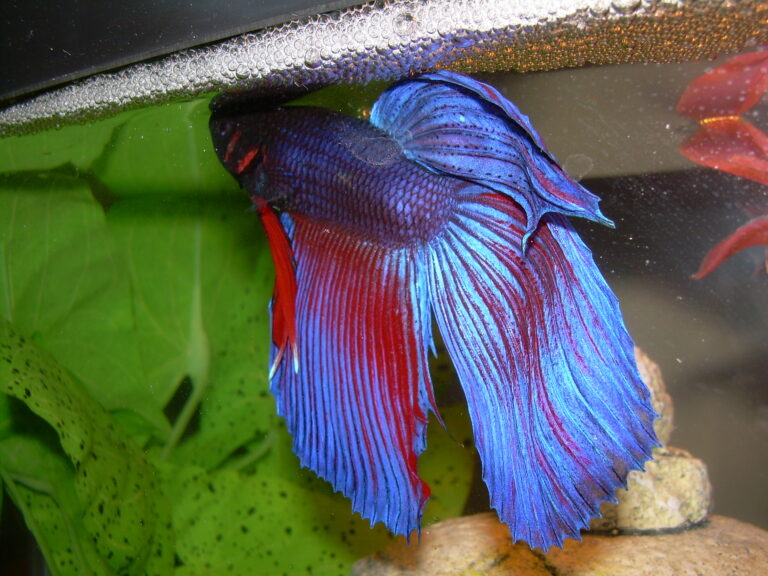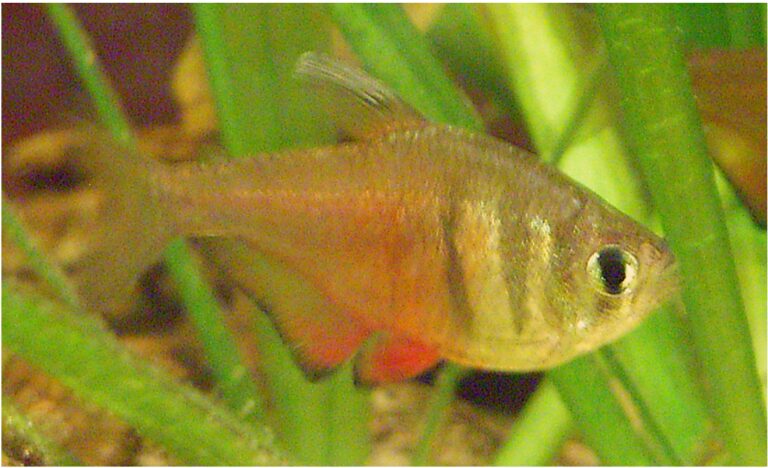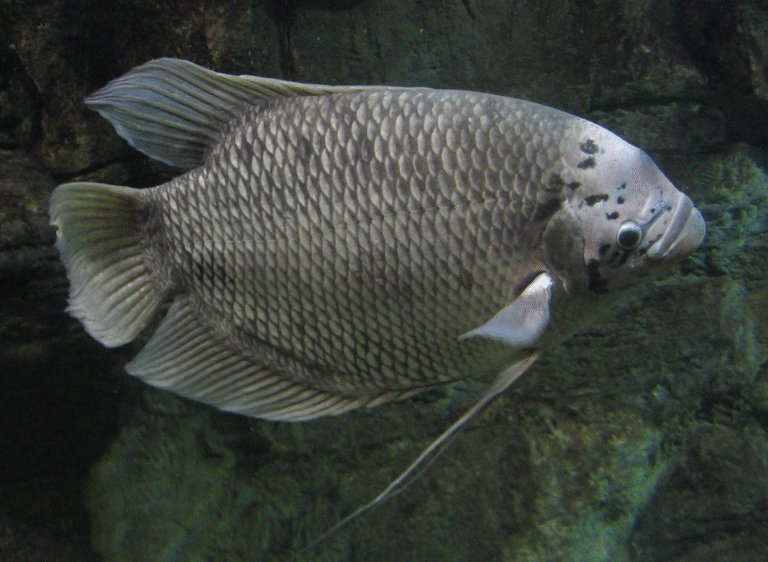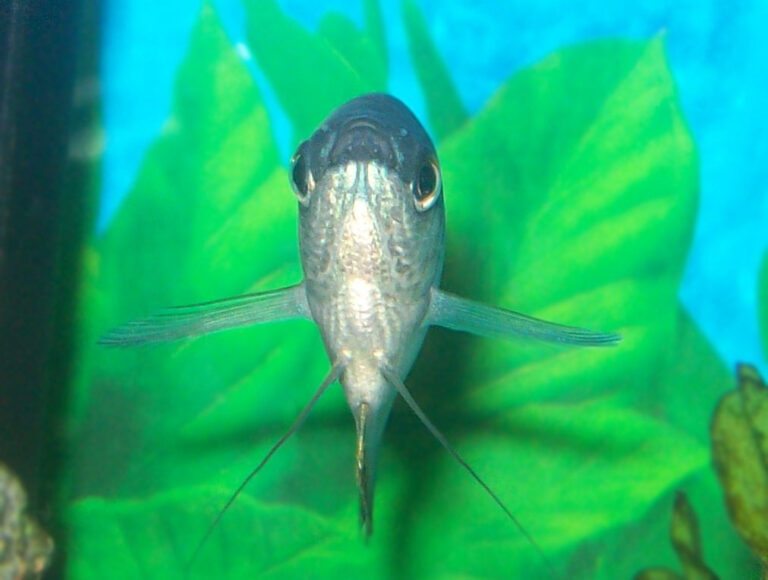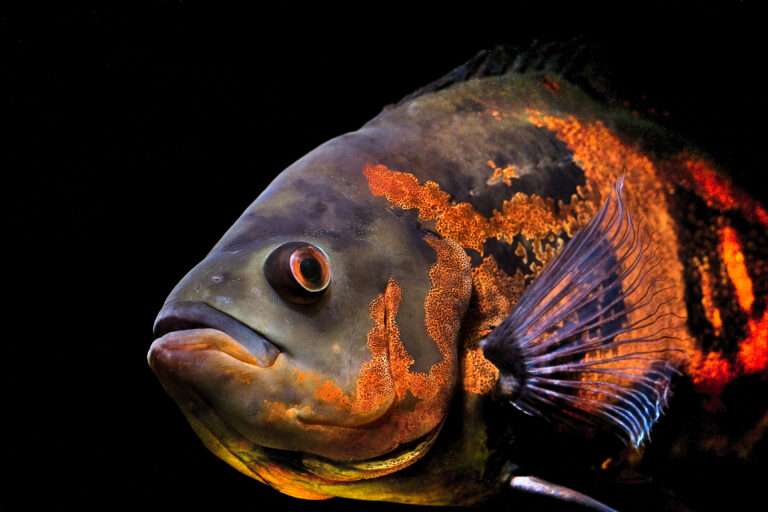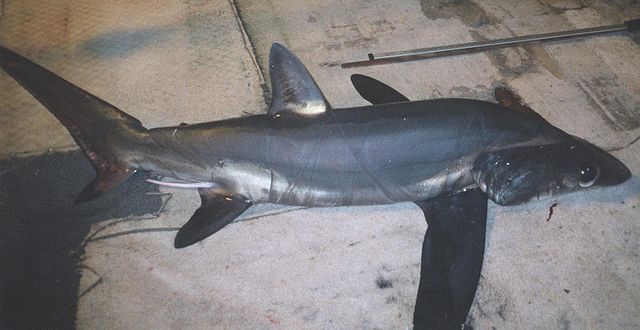Florida Keys Tarpon Fishing: Seasonal Guide and Rigging Tips
By Adam Hawthorne | Last Modified: May 19, 2025
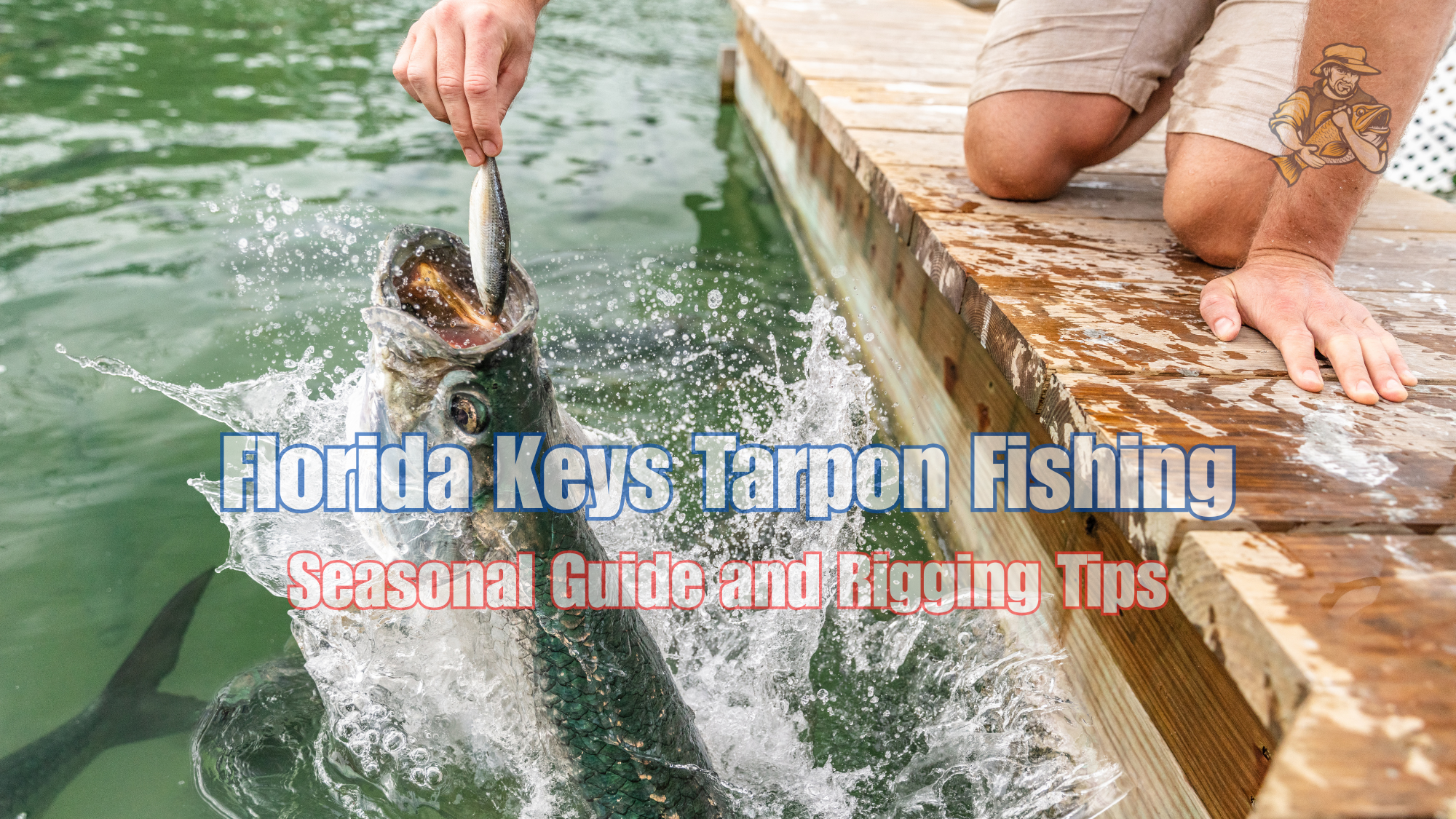
I still remember my first tarpon hookup in the Florida Keys like it happened yesterday, not 17 years ago. I was standing on the bow of my buddy Dave’s flats skiff just north of Bahia Honda Key, the morning sun barely cresting the horizon. The 80-pounder crashed my black-and-purple bunny strip fly, launched six feet into the air, and promptly snapped my 20-pound leader like it was sewing thread. I was hooked way more effectively than that fish.
After three decades of chasing the “silver king” across Florida waters, I’ve learned that Keys tarpon fishing isn’t just different from pursuing them elsewhere – it’s practically its own sport. Between the crystal clear waters, the technical poling challenges, and the sheer size of the migratory fish, the Keys experience demands specific approaches that change dramatically with the seasons.
I’ve put together this guide based on what I’ve learned the hard way – usually by doing things completely wrong multiple times before finally figuring them out. No glossy magazine perfection here, just hard-earned, sometimes embarrassing lessons that might save you a few frustrating days on the water.
Understanding Florida Keys Tarpon Migration Patterns
Before diving into seasonal strategies, we need to understand the basic movement patterns of tarpon in the Keys. These aren’t random fish – they’re following ancient migration routes with impressive predictability.
The major migration of large adult tarpon (80-200+ pounds) moves through the Keys each spring, typically beginning around March and peaking in May-June. These fish generally travel from south to north, moving up along the Atlantic side of the Keys before continuing up Florida’s coast.
What many newcomers to Keys tarpon fishing don’t realize is that there are also resident fish present year-round in certain areas. These residents tend to be smaller (20-80 pounds) but can provide fantastic action outside the prime migration season.
I’ve spent countless early mornings idling around backcountry channels in the Lower Keys during December, when most tourists assume there are no tarpon to be found. Those quiet winter days produced some of my most memorable catches, including a gorgeous 50-pounder my son Tommy hooked on his 10th birthday trip three years ago. The look on his face when that fish cleared the water was worth every penny of that very expensive guided trip.
Florida Keys Tarpon Fishing by Season
Spring (March-June): Prime Migration Time
Spring represents the pinnacle of Keys tarpon fishing, when the massive migratory schools arrive. This is when you’ll find the greatest numbers and the largest fish, but also the most boats and fishing pressure.
My first recommendation for spring fishing goes against conventional wisdom – avoid weekends in May entirely. I made this mistake during my first three years of serious tarpon pursuits, and I still regret the hours spent watching other boats cut off fish or spook schools before they reached my position. The guides call May weekends “combat fishing” for good reason.
Instead, target weekdays if possible, particularly in early April or late June when pressure decreases but fish are still present in good numbers. In recent years, I’ve noticed the migration starting earlier – I had exceptional fishing in late March of 2023 when most other anglers were still preparing their gear for “the season.”
During spring, focus on these prime locations:
- Seven Mile Bridge flats (both sides)
- Bahia Honda channels
- Islamorada oceanside flats
- Key West Harbor channels
I’ve had my most consistent spring success in the Middle Keys, particularly around the flats south of Duck Key during incoming tides. The tarpon stage in the deeper water and move up to feed as the tide rises, creating predictable shots even for less experienced anglers.
Rigging tip for spring fishing: I’ve lost more spring tarpon to light leader than any other mistake. In clear Keys water, anglers are often tempted to go too light. I won’t go under 60-pound fluorocarbon for migratory fish, even though some guides insist 40-pound is adequate. That extra strength means more landed fish, and I’ve not seen any decrease in strikes with the heavier leader. Spring is also when I exclusively use inline circle hooks rather than traditional J-hooks – with so many fish around, conservation becomes even more important.
Summer (July-September): Transitional Opportunities
By July, most of the migratory tarpon have continued north, but excellent opportunities still exist. What’s left are resident fish and what I call “stragglers” – migratory fish that decided the Keys grass flats were too appealing to leave.
Summer in the Keys means hot, still mornings that can make sight fishing challenging but productive. I focus on early morning fishing, often launching well before sunrise to capitalize on the first few hours before the heat becomes oppressive.
Three years ago in late July, I was poling along the edge of a channel near Sugarloaf Key around 5:30 AM when I spotted a daisy chain of tarpon – six fish swimming in a perfect circle, barely moving. They weren’t actively feeding, but I presented a small crab pattern about three feet ahead of the lead fish, and after a painfully long pause, it inhaled the fly. That 70-pounder became my daughter Emma’s first tarpon, and had we been on the water even an hour later, those fish would have likely moved to deeper, cooler water.
Summer locations I’ve found most reliable include:
- Backcountry channels in the Lower Keys
- Deeper grass flats near Gulf-side channels
- Bridges and channels during evening hours
- Oceanside edges with moving current
The conventional wisdom suggests fishing only early and late in summer, but I’ve had exceptional midday success during strong tidal movements. One August afternoon, despite 90+ degree temperatures, my fishing partner Dave and I hooked eleven tarpon between 1 PM and 4 PM along a nondescript flat near Big Pine Key. The key was a falling tide that was pulling bait out of the mangroves.
Summer rigging focuses more on lighter tackle as the fish see less pressure. I typically drop to 16-pound test mainline (from 20-pound in spring) and will sometimes use 40-pound fluorocarbon leader for more naturally presented flies and lures. My standard summer rig for the flats is:
- 16-pound monofilament mainline
- 40-50 pound fluorocarbon leader (about 5-6 feet)
- 2/0 Owner Aki twist hook for natural baits
- Small profile baitfish patterns in olive or tan
That said, I fish some weird stuff in summer that conventional anglers laugh at until it works. Last August, I was getting consistently refused on standard patterns until I tied on a purple and pink fly that looked more appropriate for freshwater bass. Landed three nice fish on consecutive casts with that monstrosity. Sometimes breaking patterns pays off.
Fall (October-November): The Overlooked Season
Fall brings cooling water temperatures and changing tarpon behavior. This is possibly the most overlooked season in the Keys, and I often have entire flats to myself during October trips. The fish are typically transitioning from their summer patterns to winter habitats, creating some unique opportunities.
My buddy Mike, who guides out of Islamorada, calls October “the second spring” because he consistently finds schools of migratory-sized fish moving through the Upper Keys during this period. These aren’t the same spring fish returning – they’re a different migratory group that’s less well documented.
I’ve found fall fish to be particularly structure-oriented. Deep channels adjacent to flats, bridge pilings, and channel markers all concentrate fish. One November evening below the Niles Channel Bridge, I landed five tarpon in two hours casting a simple pink bucktail jig alongside the bridge shadow line. The largest went around 75 pounds, and I wasn’t competing with another boat for position because conventional wisdom says “tarpon season” is over.
Fall tarpon in the Keys seem especially sensitive to weather changes. The days following mild cold fronts have consistently produced my best fall action. After a front passes and the water begins to warm again, tarpon that had moved to deeper water return to the flats ready to feed aggressively.
For fall rigging, I’m typically using:
- 8-weight fly rod rather than the 11-12 weights of spring
- 20-pound fluorocarbon leaders (fish see less pressure)
- Smaller profile flies and lures (3-4 inches rather than 5-6)
- More natural colors (tan, white, light green)
The conventional Florida Keys fishing calendar completely overlooks October-November for tarpon, which is exactly why I book my trips then.
Winter (December-February): The Secret Season
If you told most anglers you were heading to the Keys specifically for tarpon in January, they’d question your sanity. Yet winter has provided some of my most memorable Keys tarpon fishing, particularly for anglers willing to adjust techniques and expectations.
Winter tarpon in the Keys are almost exclusively resident fish. They’re typically smaller (20-60 pounds compared to 80-150+ in spring), but they’re often more aggressive feeders when you locate them. The challenge is finding their winter haunts, which tend to be in deeper, more protected basins and channels.
Three years ago, I spent a week in December specifically hunting winter tarpon in the Middle and Lower Keys. The oceanside was completely devoid of silver kings, but the protected basins on the Gulf side held surprising numbers. These fish were concentrated in deeper holes (8-15 feet) and would move up to adjacent shallow flats only during the warmest part of sunny days.
Winter fishing requires a complete change in approach. Rather than sight fishing on the flats, I focus on:
- Deep holes in backcountry basins
- Residential canals, particularly those with warm water influences
- Channels with good sun exposure and protection from cold winds
- Deeper edges adjacent to dark bottom that absorbs heat
My best winter day came during a particularly warm spell in February 2022. Water temperatures had climbed to around 76 degrees after several days of sunshine, and a group of approximately 30 tarpon had moved onto a small flat behind Cudjoe Key. These fish were actively feeding – something you rarely see in winter – and they demolished every crab pattern I presented. I landed six fish between 30-45 pounds in a single afternoon, and the most remarkable thing was the complete absence of other anglers.
Winter rigging takes into account both the typically smaller fish and the need for slower presentations:
- Medium-heavy spinning tackle instead of heavy conventional gear
- 15-pound test mainline with 40-pound fluorocarbon leader
- Smaller profile baits (live shrimp work exceptionally well)
- Weighted flies that get down in the water column
Something I’ve found effective is using scented artificial lures in winter – particularly those with shrimp or crab scent. The fish seem to hold them longer, giving more time for solid hooksets.
Specialized Florida Keys Tarpon Rigging Tactics
Fly Fishing Setups That Actually Work
Let me share something controversial – most commercially available tarpon flies are too large for Florida Keys fishing except during the peak spring migration. I’ve been in numerous guide boats where the captain hands clients massive 6-inch tarpon toads, then wonders why the fish refuse them repeatedly.
After hundreds of refusals over the years, I’ve scaled down dramatically. My most productive Keys tarpon fly isn’t some specialized pattern but a simple 3-inch EP baitfish with minimal flash. Keys tarpon see tremendous pressure and have become increasingly selective, particularly in the clear water environments they inhabit.
For fly fishing the Keys, I recommend:
Rods and Lines:
- 10-weight for average Keys tarpon (40-80 pounds)
- 11 or 12-weight only for spring migration fish
- Weight-forward floating lines for most situations
- Clear intermediate tip lines for deeper presentations
Leaders and Tippets:
- 60-pound fluorocarbon shock tippet (minimum)
- 40-pound class tippet (12-16 inches)
- 9-foot tapered leaders ending in 20-pound
- Total leader length: 11-12 feet
Most Effective Fly Patterns:
- Smaller baitfish patterns (2.5-3.5 inches)
- Sparsely dressed crab patterns in tan and olive
- Bunny strip patterns that pulse in the water
- Darker colors (purple/black) for low light
- Lighter colors (tan/white) for bright conditions
One of my mentors, a 70-year-old Keys guide named Captain Rick who’s been chasing tarpon longer than I’ve been alive, taught me a trick that’s saved countless flies. He adds a small piece of clear silicone tubing over the bend of the hook, which prevents the tarpon’s abrasive mouth from cutting through the material. Since adopting this technique five years ago, I’ve lost far fewer flies to hook damage.
Conventional Tackle Approaches
While fly fishing gets most of the glamour in tarpon magazines, the reality is that conventional tackle produces more consistent results for most anglers, myself included. The greatest advantage is casting distance – when tarpon are spooky in clear water, the extra 20-30 yards makes a tremendous difference.
My primary conventional setup has evolved to this configuration:
Rod and Reel:
- 8-foot medium-heavy spinning rod with fast action
- 4000-5000 size spinning reel with smooth drag
- 20-pound braided mainline (high visibility yellow)
- 5-6 feet of 60-pound fluorocarbon leader
Terminal Tackle:
- 5/0-7/0 inline circle hooks for natural baits
- 1/0-3/0 strong sharp hooks for artificial lures
- Minimal hardware (no swivels if possible)
- Loop knot connections for better lure action
Most Effective Baits and Lures:
- Live crabs (silver dollar size) – spring season
- Live pinfish – summer and fall
- DOA Baitbusters in pearl/red head – all seasons
- Weighted soft plastic jerkbaits – winter
I spent several years fishing exclusively with 30-pound test because “experts” claimed it was the right size. After losing too many good fish, I switched to 20-pound braid with a longer 60-pound leader. The thinner diameter mainline casts further, and the heavy leader handles the tarpon’s abrasive mouth. My landing percentage immediately improved from about 30% to nearly 60%.
My friend Chris, who operates a renowned Key West tackle shop, convinced me to try using braided line with high-visibility yellow color rather than more subtle green or gray. His reasoning: “You want to see what your line is doing at all times, especially when a tarpon changes direction suddenly.” He was absolutely right – that visual reference has prevented countless break-offs when fish make unexpected moves.
Bridge Fishing Specialized Gear
Bridge fishing for tarpon represents an entirely different game than flats fishing. The techniques, rigging, and expectations all change when targeting fish in these deeper, current-swept environments.
I learned bridge fishing from a crusty old-timer named Frank who’s been fishing the Seven Mile Bridge for over 40 years. The first time I met him, he looked at my flats gear and actually laughed out loud. “You’re gonna need a bigger boat,” he quipped, before generously showing me the specialized setup required.
For bridge tarpon, you’ll need:
- Heavier conventional gear (20-40 pound class rods)
- Reels with extremely smooth, powerful drags
- 40-60 pound test mainline
- 100-pound fluorocarbon or monofilament leader
- 8/0-10/0 circle hooks for natural baits
- Heavy duty swivels and terminal connections
Bridge fishing is heavily tide-dependent. Fishing the bottom half of outgoing and first half of incoming tides has consistently produced my best results. The moving water concentrates both bait and tarpon around the bridge pilings, creating predictable feeding positions.
The most productive approach I’ve found is a simple heavy jig (1-2 ounces) tipped with a live blue crab. This combination accounted for my largest bridge tarpon, a 138-pound monster caught near the Channel 5 Bridge on a windy April morning in 2019. That fish required nearly an hour to land, even on 50-pound tackle.
I almost never see bridge fishing techniques covered properly in fishing publications, perhaps because it lacks the visual appeal of flats sight fishing. But for consistent action, particularly during poor weather conditions, bridges offer tremendous opportunity.
Common Florida Keys Tarpon Fishing Mistakes
I’ve made every mistake possible when chasing Keys tarpon, some of them multiple times before finally learning my lesson. Here are the critical errors to avoid:
Undergunned Tackle
This was my cardinal sin for years. I brought the same mid-weight tackle I used for redfish and snook, thinking it would be adequate. The result? Numerous broken rods, stripped reels, and lost fish.
Keys tarpon, particularly the migratory fish, are simply larger and stronger than their cousins elsewhere in Florida. An 80-pound Keys tarpon fights with remarkable power compared to the same sized fish in the Everglades or Tampa Bay. I attribute this to the cleaner, more oxygenated water and the fish’s overall better condition.
I finally learned this lesson the hard way during a costly spring trip in 2016. I hooked seven tarpon over two days and landed exactly zero, breaking two rods and destroying the drag on my favorite reel in the process. That $1,300 mistake convinced me to invest in proper heavy-duty equipment.
Moving Too Fast On The Flats
The classic error I see repeated by visiting anglers is pushing across the flats at speeds that guarantee spooked fish. The clear water and relatively shallow depths of Keys flats mean that tarpon can detect a boat’s pressure wave from remarkable distances.
I was guilty of this for my first several seasons until a guide named Marcus finally showed me the proper approach. We spent nearly 45 minutes silently poling toward a single laying tarpon, taking only a few pushes of the pole every minute or so. That patience resulted in a perfect shot at 40 feet and a hooked fish, whereas my previous hasty approaches would have spooked that same fish at 200 yards.
When targeting laid-up tarpon on Keys flats, slower is always better. The fish aren’t going anywhere, and silence trumps speed every time.
Misreading The Tides
Tide timing is everything for productive Keys tarpon fishing, but many anglers (myself included, initially) fail to recognize how dramatically tides vary throughout the island chain.
I learned a fundamental lesson during a frustrating trip in 2018: tide charts are just general guidelines, not precise predictions. Local knowledge matters enormously. For example, the backcountry areas around Big Pine Key can experience tide changes up to 90 minutes different from nearby oceanside locations.
The most productive fishing typically occurs during tide changes rather than slack periods. I’ve found the last two hours of falling tide and first hour of rising tide to consistently produce the best action, particularly around channels connecting deeper water to shallow flats.
My absolute worst tide mistake happened during a trip with my brother James in 2017. We planned our entire day around a predicted afternoon incoming tide, only to find the water stubbornly continuing to fall. We’d failed to account for strong easterly winds that were holding the tide out despite the chart predictions. We saw hundreds of tarpon that day but couldn’t get close enough for a single shot.
Ignoring Climate Adaptation
This might be controversial, but I’ve observed significant changes in Keys tarpon behavior over my three decades fishing there. Water temperatures have increased, and migration timing has shifted earlier by approximately 2-3 weeks compared to historical patterns.
Ten years ago, the peak migration reliably hit the Middle Keys around May 10-20. The past five seasons, I’ve seen peak numbers between April 20 and May 5. Anglers who stubbornly stick to historical timing find themselves fishing behind the main migration.
Similarly, winter patterns have become less predictable. Warmer winter temperatures mean that tarpon now sometimes remain active on the flats during periods when they traditionally would have retreated to deeper water. Two Januaries ago, I found laid-up tarpon on oceanside flats during a warm spell – something that would have been extremely rare twenty years ago.
The most successful Keys tarpon anglers I know have adapted by:
- Starting their spring tarpon season 2-3 weeks earlier
- Paying closer attention to water temperature than calendar dates
- Remaining flexible in their fishing locations rather than committed to historical spots
- Using Florida Keys water temperature monitoring services to track real-time conditions
Florida Keys Tarpon Conservation Considerations
After pursuing these magnificent fish for decades, I’ve developed a profound respect for their conservation. The Florida Keys tarpon fishery, while still world-class, faces increasing pressure each year.
Proper handling is non-negotiable:
- Fight fish as quickly as tackle allows to minimize exhaustion
- Never remove large tarpon from the water
- Support fish horizontally when handling
- Use circle hooks exclusively with natural baits
- Cut leaders at the hook for deeply hooked fish
- Revive fish thoroughly before release
I watched in horror several years ago as a group of inexperienced anglers dragged a 100+ pound tarpon onto a shallow flat for photos. Despite their eventual release of the fish, it floated away belly-up, likely dead from the improper handling. That single incident changed how I approach tarpon fishing and how aggressively I advocate for proper catch and release.
The Florida Fish and Wildlife Conservation Commission has implemented increasingly stringent tarpon regulations, including the requirement to purchase a $50 harvest tag to possess or kill a tarpon. This tag is required even for mounted tarpon, effectively creating a catch-and-release only fishery with rare exceptions. These rules reflect the growing understanding of tarpon’s importance as a game fish rather than a food fish.
If you’re planning to mount a trophy tarpon, consider using measurements and photos to create a replica mount rather than killing the fish. Modern taxidermy techniques produce incredible replica mounts that are indistinguishable from traditional skin mounts.
Florida Keys Tarpon Fishing FAQs
When is the absolute best time for Florida Keys tarpon fishing?
Most experts point to May as the prime month, but I’ve consistently had my best fishing during the last two weeks of April. The migration typically begins in the Lower Keys (Key West area) in March and progressively moves north through the island chain. The advantage of late April is the combination of good fish numbers with somewhat reduced fishing pressure compared to May.
Are Florida Keys tarpon bigger than in other locations?
While the Florida Keys don’t hold the record for the largest tarpon ever caught, the average size of migratory fish is impressive. Spring fish typically range from 80-150 pounds, with some specimens exceeding 200 pounds. These fish are generally larger than those found in Florida Bay or the Everglades but comparable to those along other migration routes like Boca Grande.
What’s better for tarpon: artificial lures or natural bait?
This depends entirely on fishing conditions and location. On the flats, I’ve found artificial lures and flies to be equally or more effective than natural baits, particularly for sight-fishing scenarios. Around bridges and in channels, natural baits (particularly live crabs and pinfish) consistently outproduce artificials. The ideal approach is versatility – being prepared to use either based on conditions.
How much does a Florida Keys tarpon guide cost?
Charter rates have increased significantly in recent years. In 2025, expect to pay $850-1,200 for a full-day tarpon charter with an experienced guide. Half-day trips range from $600-800. These rates typically include all tackle, bait, and the guide’s expertise but exclude gratuity (customarily 15-20% for good service).
Can beginners successfully catch Florida Keys tarpon?
Absolutely, but expectations must be realistic. I recommend that first-time tarpon anglers book at least three days of guided fishing to maximize chances of success. While experienced anglers might land 30-50% of hooked tarpon, beginners should expect lower landing rates, perhaps 10-20% at best. The learning curve is steep but immensely rewarding.
Final Thoughts on Florida Keys Tarpon Fishing
After countless trips, thousands of hours on the water, and more mistakes than I care to admit, I’ve come to recognize Florida Keys tarpon fishing as one of angling’s greatest challenges and rewards. The combination of sight fishing opportunity, world-class fish size, and breathtaking environment creates an experience unlike any other in the fishing world.
What keeps me coming back isn’t just the fishing itself, but the constant learning process. Every trip teaches me something new about these remarkable fish and the unique ecosystem they inhabit. I’m a better angler – and perhaps a more patient person – because of the lessons these silver kings have taught me over the decades.
If you’re planning your own Keys tarpon adventure, remember that patience and persistence matter more than perfect technique or expensive gear. I’ve watched novice anglers succeed through sheer determination while experts failed due to impatience or inflexibility.
Whether you’re casting to rolling fish on a calm spring morning, fighting a bridge monster on heavy tackle, or quietly stalking laid-up giants on the flats, the Florida Keys offers tarpon fishing experiences that will forever change your angling perspective. Just be prepared for these magnificent fish to ruin you for all other fishing – after tangling with the silver king in these crystal waters, everything else feels somehow diminished.
I’ll see you on the water – just don’t expect me to share my exact spots. Some secrets I still keep to myself, even after all these years.

Meet Adam Hawthorne
I’m a lifelong fishing enthusiast who’s spent years exploring rivers, lakes, and oceans with a rod in hand. At Fishing Titan, I share hands-on tips, honest gear reviews, and everything I’ve learned about fish and ocean life, so you can fish smarter and enjoy every cast.
Share:

Meet Adam Hawthorne
I’m a lifelong fishing enthusiast who’s spent years exploring rivers, lakes, and oceans with a rod in hand. At Fishing Titan, I share hands-on tips, honest gear reviews, and everything I’ve learned about fish and ocean life, so you can fish smarter and enjoy every cast.
Related Articles
-
Siamese Fighting Fish
The Siamese Fighting Fish, scientifically known as *Betta splendens*, stands as one of the most recognizable and culturally significant freshwater fish species in the world….
-
Texas Saltwater Fishing: Essential Tips From Adam
It was June 2010, and man was I cocky heading into that first Texas saltwater trip. Drove down from Michigan in my F-150 with a…
-
Flame Tetra
The Flame Tetra (Hyphessobrycon flammeus) stands as one of the most recognizable and beloved freshwater aquarium species in the characin family. This vibrant South American…
-
Giant Gourami
The Giant Gourami (Osphronemus goramy) represents one of the most remarkable freshwater fish species in Southeast Asia, distinguished by its impressive size, complex social behaviors,…
Fish Species
-
Blue Gourami
The Blue Gourami (*Trichogaster trichopterus*) stands as one of the most recognizable and adaptable freshwater fish species in tropical aquaculture and natural ecosystems across Southeast…
-
Oscar Fish
The Oscar Fish (*Astronotus ocellatus*) stands as one of South America’s most recognizable freshwater cichlids, earning widespread recognition both in its native Amazon Basin and…
-
Colorful Tetra Fish Types Every Aquarium Owner Should Know
When I set up my first freshwater aquarium years ago, tetras quickly became my go-to fish. These colorful little swimmers add life and movement to…
-
Bigeye Thresher Shark
The Bigeye Thresher Shark represents one of the ocean’s most extraordinary predators, distinguished by its dramatically elongated tail fin that can extend up to half…

